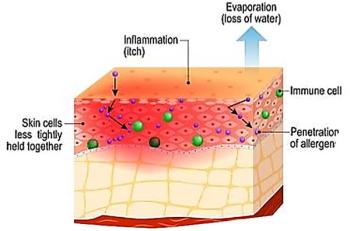
Opinion|Videos|April 17, 2025
Differences in Atopic Dermatitis Presentation Across Age Groups and Skin Types
Author(s)Shawn Kwatra, MD , Carolyn Stolte, CRNP
Panelists discuss how atopic dermatitis (AD) affects approximately 7% of adults, has increased by 3% to 5% over the last 5 years, and impacts different body regions depending on age groups.
Advertisement
Episodes in this series

Video content above is prompted by the following:
Demographic Data on Atopic Dermatitis
- Affects approximately 7% of adults, increasing 3% to 5% over last 5 years
- Slightly more common in women and people of multiple races
- Onset patterns: 58% of adults developed AD at age 18+, 25% at age 5 or younger, 24% at age 50+
- Age-specific distribution: 18-39 years (flexural surfaces, neck, elbows); 40+ years (neck, hands, face)
- Severity breakdown: 60% mild, 29% moderate, 11% severe
Distinguishing Features and Diagnosis
- Distribution patterns vary by age:
- Infants: cheeks, scalp, extensor surfaces
- Children: antecubital fossa, popliteal fossa, neck, wrists
- Adults: flexural surfaces, neck, hands, eyelids
- Diagnostic aids: IgE blood work (elevated in 50%-60% of AD patients), elevated eosinophil count
- Clinical importance of the “atopic march”: progression from eczema to asthma, allergic rhinitis, and allergic conjunctivitis
- Early intervention may reduce development of atopic march by preventing skin barrier compromise
Clinical Presentation Variations
- Skin type impacts presentation: darker skin may show papular/follicular presentation with less visible erythema
- May appear violaceous rather than erythematous in darker skin types
- Chronicity factors: long-standing untreated eczema may develop into:
- Lichen simplex chronicus (thickened plaques from scratch-itch cycle)
- Prurigo nodularis (“picker’s nodules”)
- Common thread across variations: persistent, intense itching
Newsletter
Enhance your clinical practice with the Patient Care newsletter, offering the latest evidence-based guidelines, diagnostic insights, and treatment strategies for primary care physicians.
Advertisement
Latest CME
Advertisement
Advertisement
Trending on Patient Care Online
1
FDA Clears First At-Home Brain-Stimulation Device for Major Depression
2
10 Questions on The Holiday Spirit
3
Adult Stimulant Use Accounts for Most Recent Growth in ADHD Prescribing in Canada
4
Retatrutide Achieves Up to 28.7% Weight Loss and Marked Knee Pain Reduction in Phase 3 TRIUMPH-4 Trial
5


















































































































































































































































































